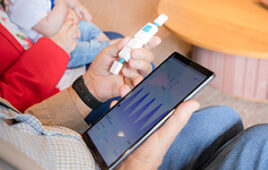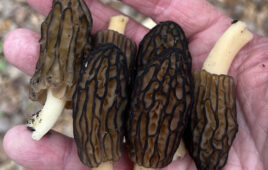
An analysis performed in 2015 by the Global Biological Standards Institute found that antibodies, cell lines and other biological reagents account for more than $10 billion, or 36 percent, of the $28 billion spent every year on research performed in the U.S. that cannot be replicated.
Poorly characterized antibodies are producing false conclusions and uninterpretable results in laboratories all over the world. But there are steps laboratories can take to validate antibodies on their own, to produce stronger results, reduce waste, and save time.
Inconsistent and poorly validated antibodies are not a small problem – researchers have reported that almost 50 percent of their antibodies are of insufficient quality. Meanwhile, two thirds of them attribute their western blot failures to problems with the primary antibody.
This problem stems partly from the lack of universally accepted guidelines for validating antibodies. Every antibody manufacturer and supplier takes different steps to test their antibodies, and since researchers purchase their antibodies through suppliers, they may not know which manufacturer makes them. This makes it difficult, and sometimes impossible, for researchers to ensure their antibodies have been properly vetted.
While suppliers must certainly change their ways, researchers have several strategies at their disposal to test the quality of their antibodies on their own. These strategies can help suppliers and researchers save time, money, and their reputation from the trap of poorly characterized antibodies.
The challenges in ensuring an antibody’s quality
Suppliers often purchase antibodies from multiple manufacturers so they can serve as a single source for antibody customers. Consequently, in many cases, a supplier’s label is the only source of information a researcher has on an antibody’s origin. But suppliers do not manufacture antibodies themselves, and they often apply their own labels to the product without adding validation and tracking information, which obscures where the product came from.
This information is critical, since antibody quality varies from manufacturer to manufacturer. Each uses different guidelines and quality control measures, and some of their practices (such as the use of overexpressed proteins in western blot images or the use of cropped images) makes it hard to vet an antibody’s quality. So, if a supplier changes manufacturers without changing their label, a customer might never know they are using an antibody from a different source, which can confound their results.
What antibody suppliers should do
Suppliers should adhere to a set of standardized validation guidelines that can help them systematically test each antibody they produce. These guidelines could enable them to validate antibodies across manufacturers and generate easily interpretable data for other researchers.
Suppliers should also advocate for genuine feedback from their customers about how their antibody performed in their customers’ hands for their specific applications. Once such unbiased and rigorous publication-quality feedback platform is Antybuddy.com.
What researchers should do
While suppliers should guarantee the validity of their products, researchers can nonetheless take steps to ensure their antibodies will work for them.
A study in Nature reported that only one third of junior researchers have ever validated their antibodies, suggesting that scientists are generally unaware of the prevalence of mischaracterized antibodies. Researchers should be cautious about their antibodies and make antibody validation part of their routine practice.
Researchers can help themselves by collecting as much validation data as they can before they make a purchase. Even when a supplier doesn’t provide its own validation data, researchers could request that it provides validation data from the original manufacturer. Researchers should be concerned if no data exists, or if the data is incomplete (for instance, if it only shows a partial western blot). Reliable validation data will help researchers save time, money and a lot of headaches.
Validation strategies
Scientists can narrow down their antibody choices by researching suppliers using search engines, like those hosted by Biocompare, SelectScience, UniProt, or NCBI.
Once researchers choose a product, they should validate antibodies regardless of their confidence in the source. They can start by optimizing protocols and antibody dilutions and report their final concentrations. Researchers should first determine their antibody stock’s initial concentration, since this information is critical for calculating the final concentration following dilution. Vendors should be able to provide these data if queried. Researchers can use a supplier’s experimental conditions as a starting point to save time, but only if that supplier tested their antibodies in physiologically relevant conditions and provided detailed protocols.
Next, researchers should test the specificity and sensitivity of their antibodies and check if their results are reproducible. Importantly, they should assess these metrics within the specific context of their application. Researchers can assess an antibody’s specificity by comparing its performance in cell lines with and without the target protein using CRISPR knock-outs or knockdowns using RNAi. An antibody’s sensitivity can be measured using protein-specific index arrays containing cell lines with varying but known amounts of target protein. A simpler method involves spiking a sample that does not express the protein of interest with known amounts of purified protein. Regardless of what technique is used, researchers should also use both positive and negative controls for every experiment.
Also, since antibodies have limited shelf lives, they should be properly stored according to the manufacturer’s specifications and retested prior to using them with important samples. Finally, researchers should train new members of the lab on the importance of antibody validation and best practices.
A new approach to antibody validation
Recently, the Global Biological Standards Institute (GBSI) hosted the Asilomar Antibody Validation Workshop, where scientists and business leaders from academia and industry established a plan to develop independently verified antibody validation standards. The GBSI established working groups to develop a scoring system for the seven most common applications. These guidelines should help researchers and manufacturers alike demonstrate and confirm the validity of their antibodies, thereby reducing wasted time and resources for scientists.
Researchers can do their part by joining this growing conversation on how to develop better validation standards. Several portals have been established, including Antibodypedia and EuroMAbNet. In these portals, researchers can discuss strategies for developing standards and guidelines for antibody validation, and they can share data, protocols, and tips with others studying the same target protein or similar applications.
Anna Quinlan is Editorial Manager, Bio-Rad Laboratories, Hercules, CA. Poulomi Acharya is Global Product Manager, Bio-Rad Laboratories, Hercules, CA.




